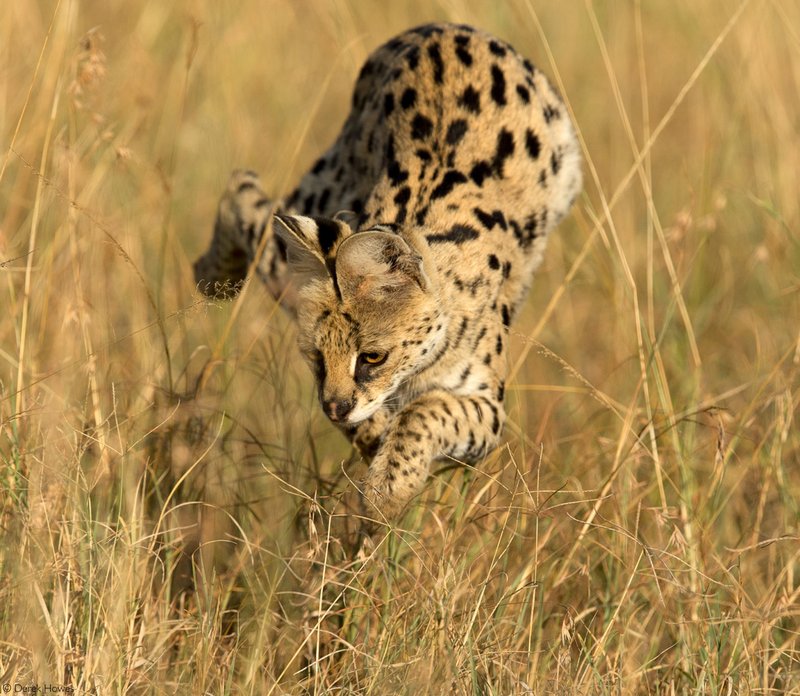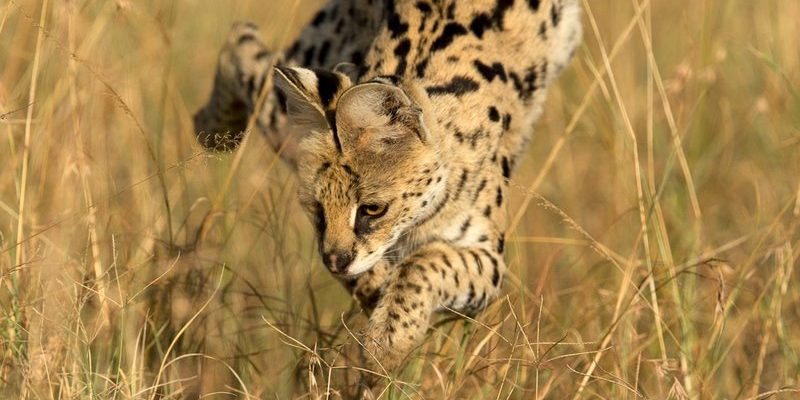
You might be wondering, “What makes the serval different from other cats?” Well, here’s the thing: servals have some unique traits and strategies that set them apart. Not only are they expert hunters, but their diet also varies depending on what’s available in their habitat. Throughout this article, we’ll explore the intricacies of the serval’s diet, hunting techniques, and more. So, grab a cup of coffee and let’s jump into the wild world of this remarkable cat!
Understanding the Serval’s Habitat
Before we dive into what the serval eats and how it hunts, it’s important to understand where it lives. Servals prefer *wetlands, savannas,* and *grasslands*, where tall grasses and reeds provide both cover and hunting grounds. These environments are rich in small mammals, birds, and even insects, which make up a significant portion of their diet.
You might imagine a lively scene filled with chirping birds and rustling grasses. In this habitat, servals use their keen eyesight and hearing to detect the movements of their prey. The tall grass acts as a natural blind, allowing them to stalk without being seen. Honestly, it’s a bit like being a kid playing hide and seek, where the tall foliage gives you the perfect spot to ambush your friends!
The Serval’s Diet: An Overview
The serval’s diet is quite diverse and can change depending on the season and availability of prey. Generally speaking, they primarily feed on:
- Rodents (like rats and mice)
- Birds
- Reptiles
- Insects
- Small mammals (like hares and young antelopes)
Here’s the thing: servals are opportunistic feeders. This means they will eat whatever is available, making them quite adaptable. If you think about it, it’s like having a buffet where you’re not picky; you’ll take what looks good.
One interesting aspect of their diet is their preference for small mammals. Studies have shown that rodents make up about 60-80% of their diet. That’s pretty significant! It’s not just about survival for servals; it’s about finding the right balance of nutrients to thrive in the wild.
Hunting Techniques of the Serval
Now, let’s unpack how servals catch their food. They are talented hunters, and their skills are fascinating. Servals primarily hunt alone, using stealth and agility to catch their prey. Here’s a breakdown of their hunting techniques:
1. Stalking: Servals are experts at using cover. They will quietly stalk their prey, moving low to the ground and using the grass to hide their approach. Imagine a ninja in the wild, sneaking through the underbrush!
2. Leaping: Once they’re close enough, servals employ an impressive tactic—they leap high into the air! This surprising move helps them catch birds and small mammals that may be hiding. They can leap up to 10 feet in one bound, which is quite impressive for a cat of their size!
3. Pouncing: When they land, servals often deliver a swift pounce to catch their prey off guard. They rely on their keen eyesight and acute hearing to detect the slightest movements, allowing them to pinpoint the exact moment to strike.
It’s a bit like a well-orchestrated dance—calm, calculated, and suddenly explosive!
How Servals Adapt their Hunting Strategies
Servals are not just one-trick ponies. They adapt their hunting strategies based on their location and the type of prey they’re pursuing. For instance, in areas with dense vegetation, they might rely more on their hearing to locate prey hidden in the grass.
Conversely, in open spaces, visual cues become their best friends. They can spot movement from far away, which helps them zero in on potential meals. It’s like switching gears when driving; they know when to take it slow and when to speed up!
Another factor is the time of day. Servals are primarily nocturnal hunters, which means they do most of their hunting at night. This not only helps them avoid the heat of the day but also allows them to take advantage of the active nighttime critters. You might picture them setting out under the moonlight, ready to hunt with stealth and precision.
The Role of Social Behavior in Hunting
Believe it or not, servals do sometimes hunt alongside other servals! While they are generally solitary animals, female servals may hunt with their young as they learn essential skills. This family dynamic helps the kittens gather experience and become effective hunters themselves.
In some cases, servals may also engage in cooperative hunting with other species. For example, if a group of servals notices a large prey animal—a common antelope, perhaps—they might work together to chase it down. Think of it as a team effort, where each serval plays a specific role in bringing down the meal of the day.
This behavior illustrates how intelligent and adaptable these animals are. They’re not just survivalists; they’re also social learners, and they use these skills to ensure their survival in the wild.
Nutritional Needs and Health Considerations
Just like us, servals need a well-balanced diet to thrive. Consuming a variety of foods helps them get the necessary nutrients for health and longevity. A diet rich in protein, vitamins, and minerals is crucial, especially since they lead such active lives.
When we think about servals in captivity, their diet can still mimic what they would eat in the wild. Zookeepers and wildlife rehabilitation centers often provide a mix of whole prey items, supplemented with vitamins and minerals when necessary. This helps ensure they remain healthy, even when their options are limited.
You might wonder, “What happens if a serval doesn’t get enough nutrition?” Well, just like any creature, a lack of proper nutrition can lead to health problems. Servals may become lethargic, struggle with reproductive issues, or even face a shorter lifespan. This highlights the importance of maintaining a balanced diet and quality food sources.
Conservation and the Future of Servals
Understanding servals and their dietary habits is vital not just for wildlife enthusiasts but also for conservation efforts. As habitats change due to human expansion and climate change, servals face increased challenges. Loss of habitat directly impacts their food sources and hunting opportunities.
Conservation programs aim to protect the serval’s natural habitats while promoting awareness about the importance of this unique species. By educating communities about the serval’s role in the ecosystem, we can help ensure that these beautiful cats continue to thrive.
Here’s the thing: when we protect servals, we’re also protecting the whole ecosystem. Keeping the balance in check is key to maintaining healthy populations of both predators and prey.
In conclusion, the diet and hunting strategies of the serval reflect a remarkable adaptation to their environment. They are skilled hunters, clever eaters, and crucial players in their ecosystems. By understanding their needs and behaviors, we can appreciate the beauty of these wild cats and work towards their conservation. Let’s continue to celebrate the serval’s elegance in the wild and advocate for a future where they can roam freely without the threat of extinction.

